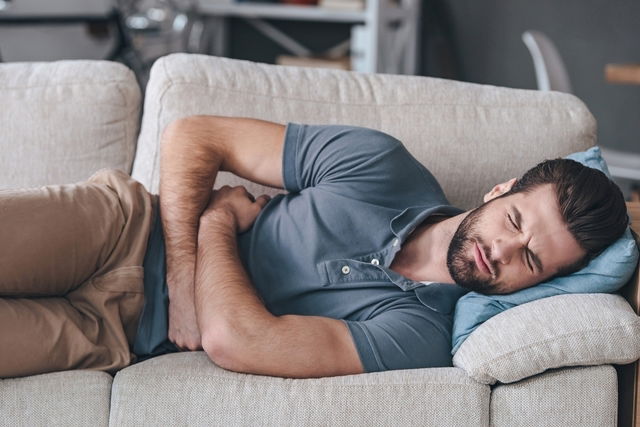An enema is a procedure that consists of inserting a small tube into the anus and injecting water or other fluids into the lower intestines. The goal of an enema is to cleanse the intestine, and it is usually prescribed for the treatment of constipation. Enemas help to relieve discomfort and stimulate bowel movements.
Enemas are usually medically prescribed, and can be used for people with hard, impacted stool or prior to a medical exam, like a colonoscopy. Contrast dye can also be injected through an enema for better visualization of the rectum and large intestine during diagnostic imaging.
You should not perform an enema more than once per week, as it can cause changes to naturally occurring intestinal bacteria as well as changes to stool flow. Frequent enemas can lead to worsening of constipation or stimulate chronic diarrhea.

How to perform an enema
To perform an enema, you should first obtain an enema kit from your pharmacy. They can be purchased over-the-counter or with a prescription. Next, you should:
- Assemble the enema kit, by connecting the tube to the fluid container, and the anal tip to the tube.
- Fill the container with the fluid as instructed (some kits may have pre-filled fluid container, or you may need to dissolve fluid with water).
- Prime the tube with the enema solution, so that the tube has no air bubbles.
- Lubricate the rectal tip of the tube, with lubricant or Vaseline so that it can be comfortable inserted.
- Get into position, either by laying on your side or on your back with your knees bent toward your chest.
- Insert the rectal tip gently, making sure not to force insertion and to angle the insertion toward your belly-button.
- Insert the fluid, either by squeezing the enema container or by unplugging the tube (refer to your kit instructions).
- Hold the fluid in your rectum until you have a strong urge to defecate. This usually occurs within 2 to 5 minutes.
Some enemas can be done using just warm water, however some people may also benefit from adding olive oil to the water. Enemas are most effective when performed with solutions purchased from the pharmacy.
If you are still unable to have a bowel movement after using a pharmacy enema, you should see your doctor for additional assessment and treatment. Bowel movements can also be stimulated with a diet that is rich in fiber and fruit. Check out a list of the best natural laxative foods that you can incorporate into your diet.
When to see the doctor
You should see your doctor or proceed to the emergency room if:
- You have not had a bowel movement in over a week
- If you have not had a bowel movement after using a pharmacy enema
- If you have intense constipation symptoms, like a very bloated belly or abdominal pain.
In these cases, the doctor will likely order testing to investigate what is causing the persistent constipation. Some possible causes include a twisted bowel, a bowel obstruction or a hernia.
Learn more about ways you can relieve constipation naturally at home.
